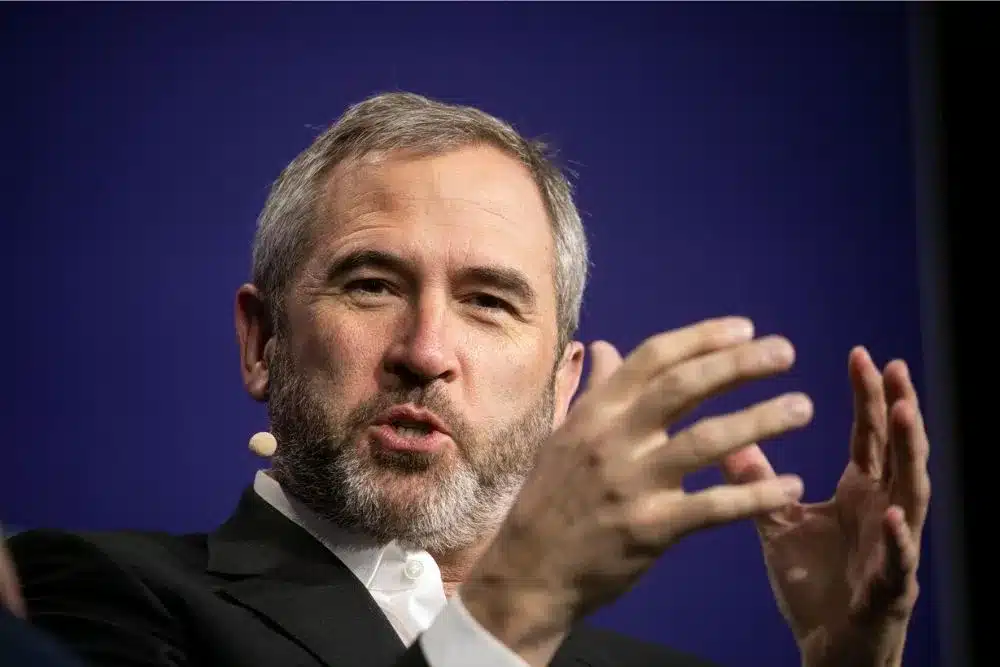- Banks race for control as Ripple’s bridging vision gains traction.
- Ripple’s Hidden Road deal strengthens its institutional foothold in finance.
- Garlinghouse’s long-term XRP strategy aligns perfectly with global stablecoin shift.
According to Paul Barron, the global banking sector is moving rapidly toward launching its own stablecoins, signaling a major transformation in digital finance. This development has stirred discussions within the XRP community, with many now questioning whether Ripple CEO Brad Garlinghouse had been preparing for this exact shift all along.
Major U.S. banks, including JPMorgan, Bank of America, Citigroup, and Wells Fargo, are forming a consortium to issue a collective stablecoin for the U.S. market. Meanwhile, European financial leaders such as ING, Deutsche Bank, and UniCredit are advancing a euro-backed digital currency set to debut by 2026.
Bank of America’s CEO confirmed readiness to launch once regulatory frameworks are finalized, highlighting growing momentum among traditional institutions to claim dominance in the stablecoin space.
Also Read: Bitcoin Market Sees Rising Fakeouts as Whales Drive Volatility Ahead of FOMC Decisions
Banks Seek Control While Ripple’s Strategy Takes Shape
This move reflects a clear desire among banks to maintain full control of their payment systems rather than rely on neutral infrastructures like SWIFT’s proposed “neutral rails.” However, the creation of separate bank-issued coins—JPM Coin, BofA Coin, and Euro Bank Coin—could lead to increased fragmentation across financial systems.
Each network may operate within its own “walled garden,” limiting interoperability and efficiency.
Ripple’s long-standing mission to connect isolated financial networks through the XRP Ledger now appears increasingly aligned with this unfolding trend. XRP’s ability to act as a bridge asset between different systems positions Ripple as a key player capable of linking these emerging silos.
As banks prioritize proprietary control, Ripple’s focus on connectivity and liquidity stands out as a solution designed for this very environment.
Ripple Strengthens Its Position with Hidden Road Acquisition
In a strategic move that complements this evolving landscape, Ripple has completed its acquisition of Hidden Road, a global prime brokerage platform serving leading hedge funds and institutions.
This acquisition makes Ripple the first crypto company to own and operate a fully regulated multi-asset prime brokerage, bridging traditional finance and the digital asset market. According to Ripple’s official post on X, this deal will expand institutional access to digital assets at scale.
A Calculated Move Toward the Future of Finance
Through the Hidden Road acquisition, Ripple gains direct access to infrastructure typically controlled by major Wall Street players. This connection allows banks, hedge funds, and asset managers to engage with the XRP Ledger ecosystem without intermediaries. Ripple Prime now provides an integrated platform combining liquidity, execution, and market access.
As global banks compete to establish their own digital currencies, Ripple’s ecosystem appears to have been built precisely for this moment. Brad Garlinghouse, long-term vision of bridging fragmented financial systems may now be materializing, placing Ripple at the center of a financial transformation that could redefine global payments.
Also Read: Thodex Founder Faruk Fatih Ozer Found Dead in Turkish Prison

